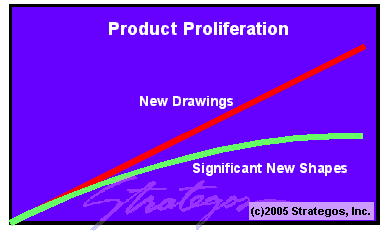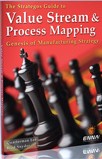GT and Design Engineering
 A
typical mechanical designer produces about two discrete new parts per week. Thus, even a small
department designs hundreds of parts each year. Without formal methods, designers cannot track
the drawings. They duplicate or near duplicate many existing parts. Like the Hydra of Greek
Mythology, the problem feeds on itself. As more new designs enter the system they become harder
to track and encourage even more duplication. GT using Coding and Classification (C&C) addresses
this. A
typical mechanical designer produces about two discrete new parts per week. Thus, even a small
department designs hundreds of parts each year. Without formal methods, designers cannot track
the drawings. They duplicate or near duplicate many existing parts. Like the Hydra of Greek
Mythology, the problem feeds on itself. As more new designs enter the system they become harder
to track and encourage even more duplication. GT using Coding and Classification (C&C) addresses
this.
GT and Other Departments
GT produces savings and benefits in almost every area
of the business. It combines tasks, equipment, gages, tooling and schedules into larger groups
of similar elements for similar solutions.
Purchasing can group similar parts and achieve quantity
discounts. For non-standard purchased parts, grouping helps suppliers achieve savings and reduce
price.
Accounting is simpler in a GT environment. Here costs
are collected by cell and family rather than individual part. A simple allocation procedure
assigns costs accurately within families.
|
GT and Manufacturing
Group Technology benefits manufacturing in
many ways. It reduces the number and variety of parts. Process planning for the remaining parts
is easier and more consistent.
Computer Aided Process Planning (CAPP) is
an important tool for this. It uses the coded similarities to plan consistently, standardize and
accurately estimate costs. It then assigns the part to a GT manufacturing cell.
Group Technology cells reduce throughput
time and Work-In-Process. They simplify schedules, reduce transportation and ease supervision.
Some of the more dramatic and tangible
savings come from improved setups and tooling cost. Setup time reductions bring smaller lot
sizes and smaller queues which mean faster throughput, shorter lead times and decreased
inventory.
GT sometimes eliminates the need for
expensive NC equipment. Combined with NC, GT simplifies programming, fixturing and tooling.
Classification Methods
Classification may be done by several methods.
'Eyeball' and experience suffice when parts are few. Production Flow Analysis considers current
processes and sequences. It groups parts accordingly. Graphics classification is useful for
design standardization and design retrieval. Coding systems are highly versatile in
manufacturing, design and purchasing but they are very expensive because of the labor involved
in the original coding.

|





